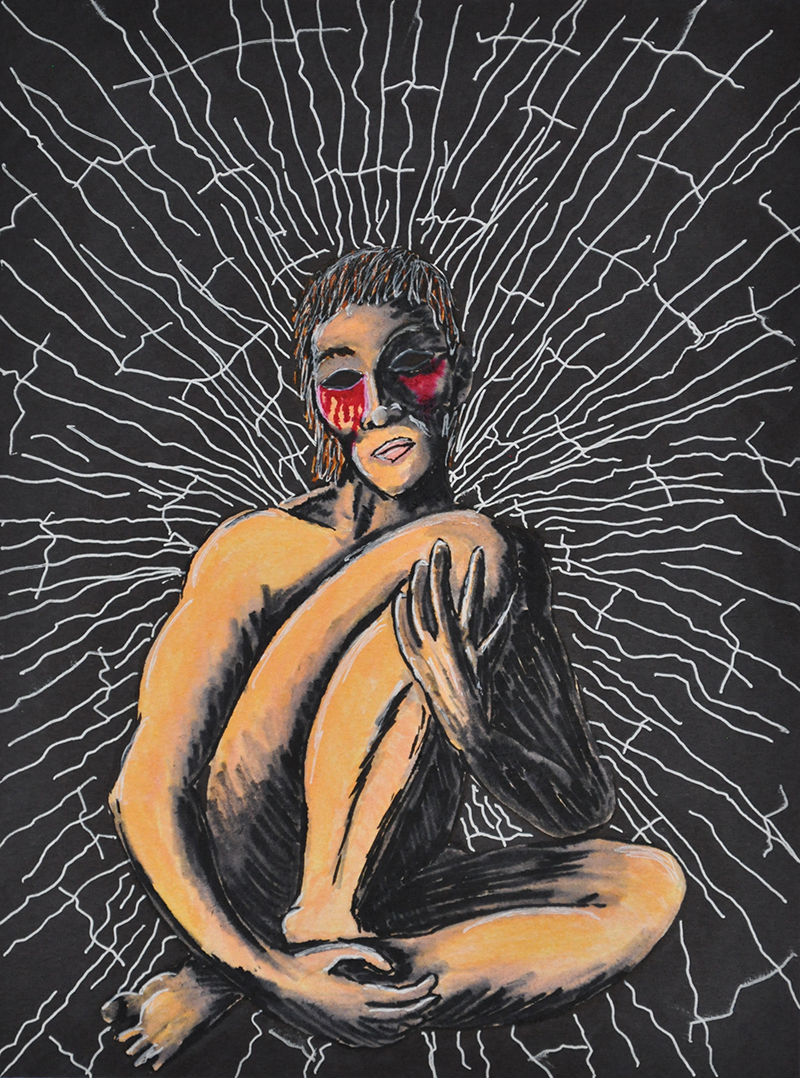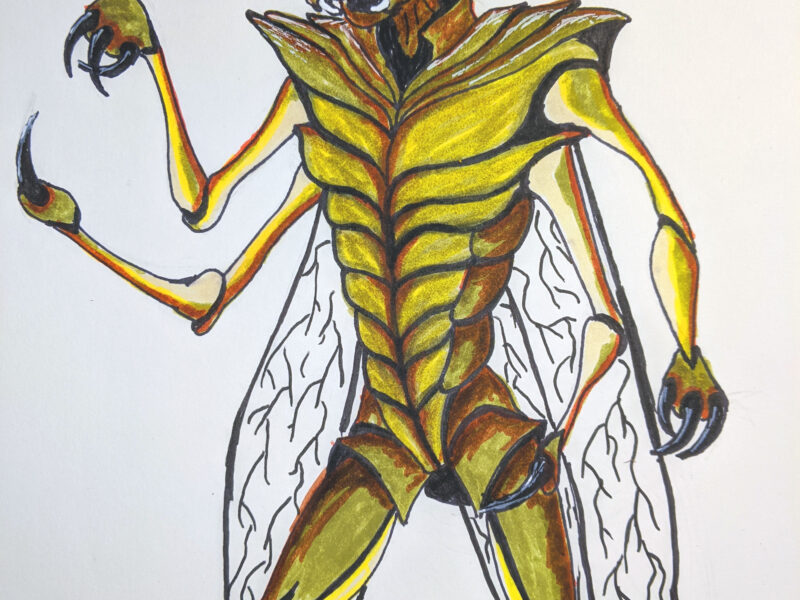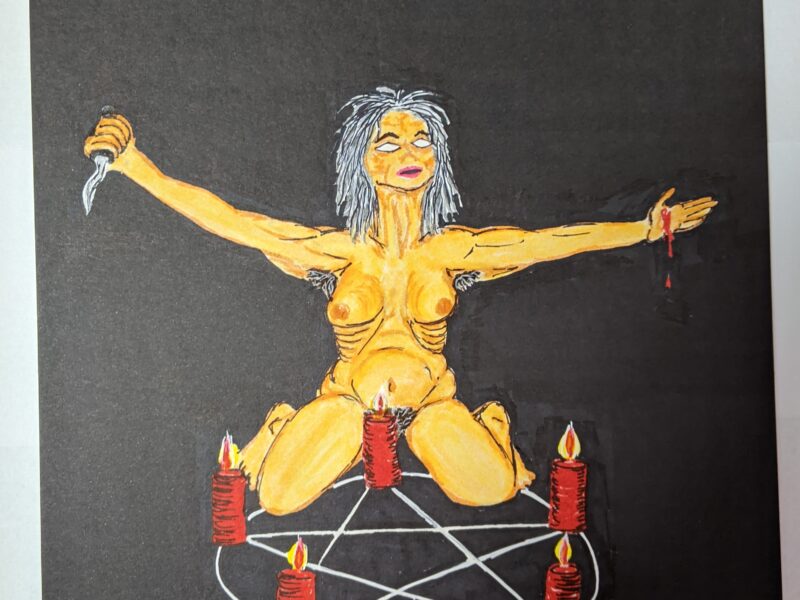I don’t need to tell you that this one is from a time where emotions were beating me up pretty good. As per my usual, I used a model to hide the true source of the feeling. The fact I used a nude female model is more of a feeling exposed and vulnerable issue than a sexual one. This drawing is one I love for its feeling. It is so accurate and descriptive. Probably as close to saying how I feel most of the time as I will ever come.
While I am on that, I feel like expressing ones inner fears and feelings is one of the highest and best uses of art in general. Sure I wish more of my work hung in homes and sold…but it is more important that I get some of these things out of me… or share them so others know it is ok to feel these things… and you can survive.
Here is some background on mental health and art.
Art has long been a powerful medium for expressing complex emotions and experiences, including those related to mental health challenges. Artwork that represents mental health issues can serve as a form of personal catharsis for the artist and a means of raising awareness and fostering empathy among viewers. Here are a few key points and examples to consider:
Expressive Techniques
Abstract Art:
- Abstract art often uses color, form, and texture to convey emotions that are difficult to articulate. For example, dark, chaotic patterns might represent feelings of anxiety or depression, while lighter, more structured compositions could suggest periods of clarity or calm.
- Artists like Edvard Munch, known for “The Scream,” use abstract elements to depict intense psychological states.
Surrealism:
- Surrealist art combines dream-like imagery with elements of the subconscious, often highlighting the bizarre and illogical aspects of mental health struggles.
- Salvador Dalí’s works, such as “The Persistence of Memory,” use distorted realities to explore the nature of perception and consciousness, often reflecting the disorientation felt during mental health crises.
Expressionism:
- Expressionist artists focus on representing emotional experiences rather than physical reality. They often use exaggerated colors and forms to evoke a strong emotional response.
- Vincent van Gogh’s “Starry Night” is an iconic example, where the swirling, tumultuous sky is thought to reflect the artist’s turbulent inner life and struggles with mental illness.
Contemporary Examples
Yayoi Kusama:
- Kusama, known for her polka dot-covered installations and infinity rooms, openly discusses her experiences with obsessive-compulsive disorder and hallucinations. Her work creates immersive environments that reflect her mental state, inviting viewers to experience a fraction of her inner world.
Tracey Emin:
- Emin’s “My Bed” is a raw and unfiltered installation that depicts the artist’s bed surrounded by personal items, evoking a moment of depression and crisis. The disarray of the bed and surrounding objects powerfully captures the chaos of a mental health breakdown.
The Art of Self-Portraiture:
- Self-portraits can be a profound way for artists to explore and communicate their mental health challenges. Frida Kahlo’s numerous self-portraits, for example, delve into her physical and emotional pain, providing insight into her struggles with chronic pain and mental anguish.
Symbolism and Metaphor
Butterflies and Metamorphosis:
- Butterflies are often used as symbols of transformation and hope. Artists like Alena Makagon depict human figures intertwined with butterflies to represent personal growth and recovery from mental health challenges.
Masks and Faces:
- Masks can symbolize the hiding of true emotions or the personas people adopt to cope with mental health issues. An artist like Cindy Sherman, who uses photography to explore identity, often incorporates masks and costumes to challenge perceptions and reveal hidden facets of the self.
Therapeutic and Community Art
Art Therapy:
- Art therapy uses the process of creating art to improve mental health and well-being. It allows individuals to express feelings they may not be able to articulate verbally and can be a crucial tool in managing mental health.
Community Projects:
- Collaborative art projects can raise awareness and reduce the stigma surrounding mental health issues. Murals, installations, and exhibitions created by groups of artists can provide a platform for sharing experiences and fostering a sense of community and support.
Conclusion
Artwork that represents mental health challenges serves multiple purposes: it is a form of personal expression and healing for the artist, a tool for raising awareness, and a means of fostering empathy and understanding in society. Through various styles, techniques, and symbols, artists can convey the complex and often hidden realities of living with mental health issues, creating powerful connections between their inner worlds and the viewers.



